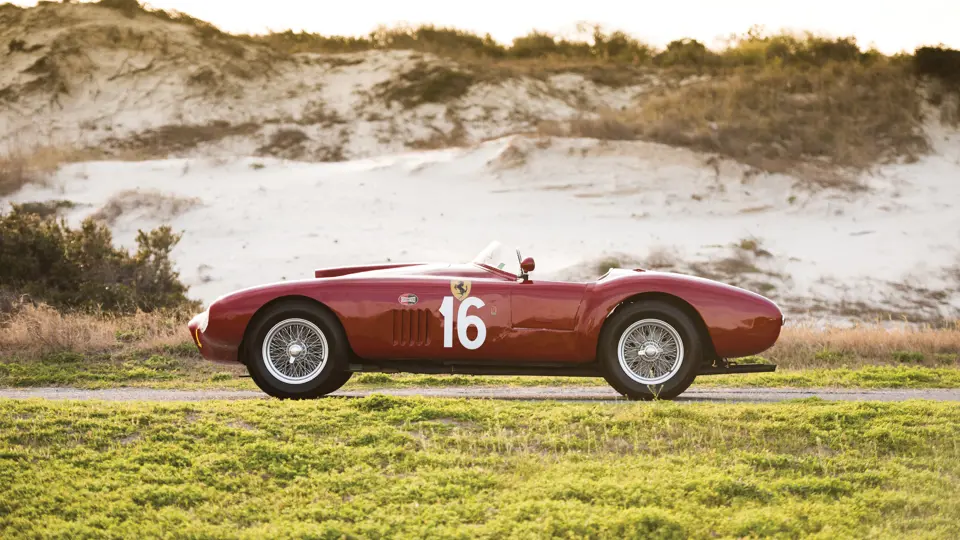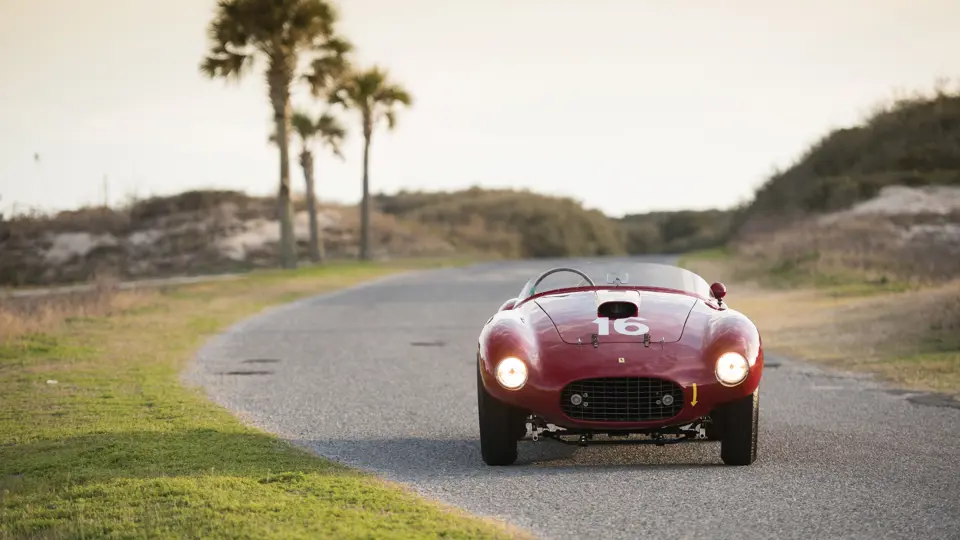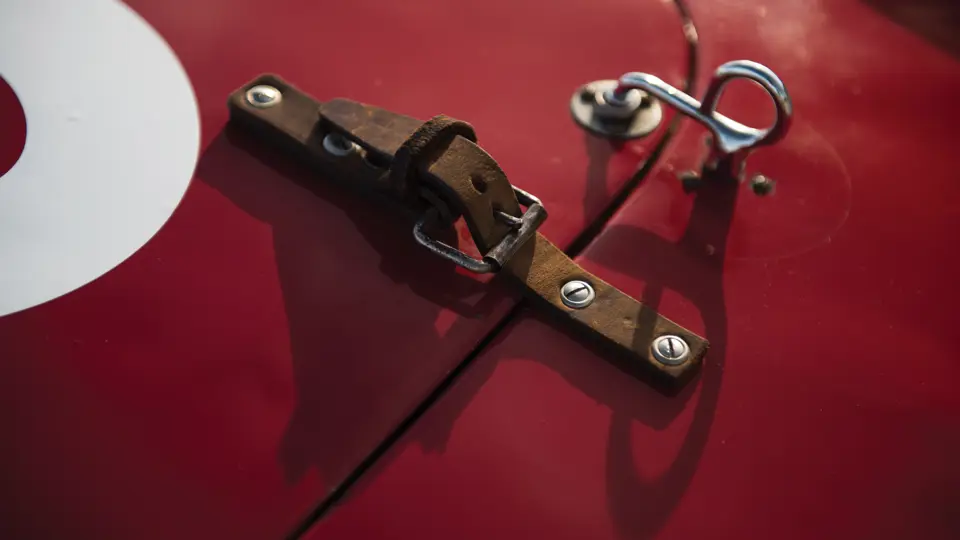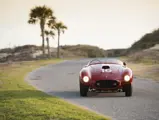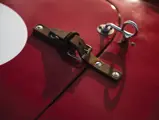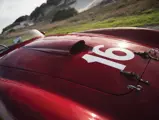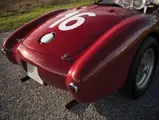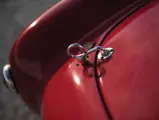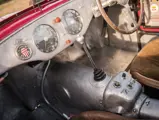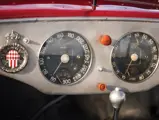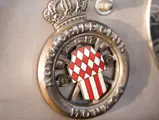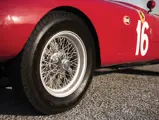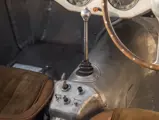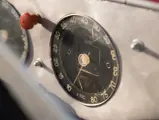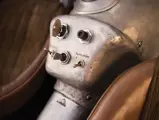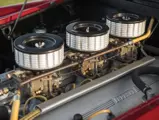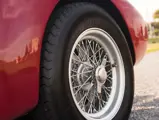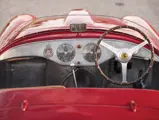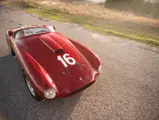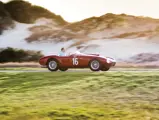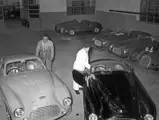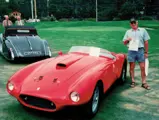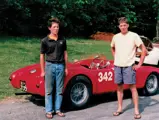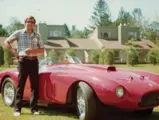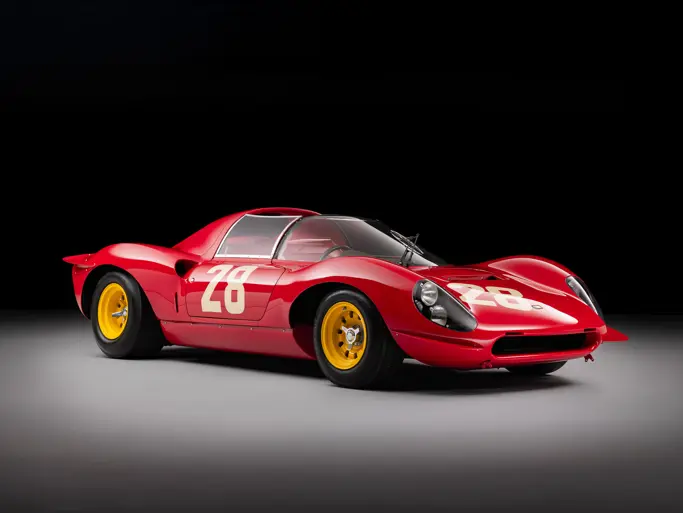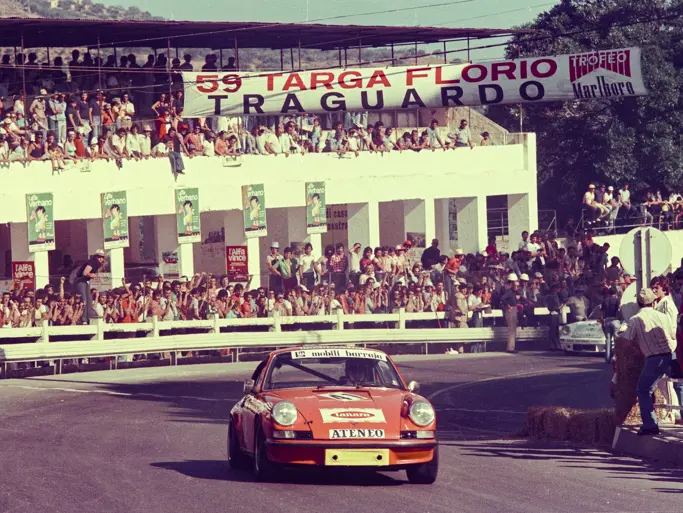
1950 Ferrari 275S/340 America Barchetta by Scaglietti
{{lr.item.text}}
$7,975,000 USD | Sold
{{bidding.lot.reserveStatusFormatted}}
- A 12-cylinder Scuderia Ferrari Barchetta; factory Mille Miglia entrant
- One of nine Works-entry Ferrari barchettas from the 1950s
- The first Lampredi-engined Ferrari sports racer
- Fascinating period racing history, with over 60 years of ownership in the hands of loving enthusiasts
- Raced in period by Alberto Ascari, Giovanni Bracco, and the Marzotto brothers
- Displayed at the 1950 Salon de l'Automobile in Paris
- Ferrari Classiche attestation for competition cars
220 bhp, 4,101 cc longitudinal 60-degree Lampredi V-12 engine with triple Weber Tipo 40 DCF3 carburetors, five-speed manual transmission, independent front suspension with unequal-length wishbones, a transverse leaf spring, and hydraulic shock absorbers, rear suspension with a live rear axle, semi-elliptical springs, hydraulic shock absorbers, and an anti-roll bar, and four-wheel drum brakes. Wheelbase: 95.27 in.
THE 275S AND THE 1950 MILLE MIGLIA
Calling chassis number 0030 MT simply rare and significant would be an incredible understatement, as this very car, born as one of only two 275S Barchettas ever built, became the first Lampredi-engined Ferrari sports racer. Originally fitted with coachwork by Touring and a 3.3-liter V-12, both examples built would immediately be put to the test by the factory, as their first competitive outing would be at the 1950 Mille Miglia.
According to an article published in issue 109 of The Prancing Horse, Ferrari invited Alberto Ascari and Luigi Villoresi, the factory drivers for that year’s Mille Miglia, to Maranello to test the new 275S just days prior to the race. Ascari would get behind the wheel of chassis number 0030 MT with Senesio Nicolini as navigator for the famed Italian road race. Unfortunately, despite their driver’s best efforts, both chassis number 0030 MT and its sister car, 0032 MT, would not finish the race due to rear axle failures on both cars.
Following the Mille Miglia, chassis number 0030 MT returned to Maranello, where it was upgraded with a newer 4.1-liter 340 America V-12 engine sourced from one of Ferrari’s Formula One cars. During this time, the car was also shown at the 1950 Salon de l'Automobile at the Grand Palais in Paris. The next year, chassis number 0030 MT was purchased by Scuderia Marzotto, who continued to race the Ferrari throughout Italy.
The car competed with Scuderia Marzotto in a number of events, including twice more at the Mille Miglia in 1951 and 1952, as well as the Targa Florio in 1951 and the sports car race at the 1952 Monaco Grand Prix. During this time, Giovanni Bracco and Gianni Marzotto, a pair of well-known Italian racing drivers, were lucky enough to get behind the wheel on a handful of occasions at events throughout their home country.
At the end of its formal racing career, chassis number 0030 MT’s original Touring bodywork had been replaced with a body crafted by Carrozzeria Scaglietti. According to Ferrari historian Marcel Massini, the car would remain in Italy until 1958, passing through four subsequent owners until that year, when it was purchased by Carroll Mills, a serviceman living in Europe, from Vincenzo Sorrentino, of Naples, Italy, in a trade for a Maserati plus cash. Mills then imported it to the United States and stored the car at Zumbach Motors in New York City before moving it to his home in rural Vermont sometime prior to 1961.
A BARN, A BOY, AND A FERRARI
At just 12 years old, Peter Markowski, a neighbor of Mills' in West Rutland, Vermont, was a burgeoning sports car enthusiast, and he heard of an older gentleman nearby his home who had a barn full of old cars. Curious about the cars, Markowski did what any other enthusiast at that age without a driver’s license would do: he got on his tractor and went to go have a look for himself, finding that the rumors were true. Mills’ barn was full of cars of all different types, including an Alfa Romeo 6C 2500, an Austin Healey 100-6, and even a handful of Packards, in addition to the 275S/340.
Even though there were so many incredible cars in the barn, it was the red Ferrari that captured young Peter’s heart. He built a friendship with Mills that led to the pair eventually striking an agreement. Mills would allow Markowski to purchase the Ferrari for $500 if he would get the other cars in the barn back on the road. Three years later, at the age of 15, the Packards were running and Peter Markowski owned a Ferrari.
It was obvious that the Ferrari nonetheless required lots of work, and at that time, the easy thing to do would be to remove the complicated Lampredi engine and fit an American-built V-8 in its place. Luckily for Peter (and chassis number 0030 MT), he was working on a 250 GTO, owned at the time by Dr. Richard Cardozo. Cardozo convinced him that it would be worth keeping the original engine, as it was an important part of the car’s history. In order to get that engine up and running, Markowski struck a deal with Luigi Chinetti to categorize their warehouse, and in return, he would be allowed to take the parts he needed for his car. What Markowski couldn’t find in the warehouse, he produced for himself.
Needless to say, through completely rebuilding chassis number 0030 MT, Markowski developed a unique understanding of the car and was able to further hone his mechanical skills by working on other Ferraris at the time. Markowski got the car running again at the age of 21, and from there, as he says, “I drove the wheels off it!”
During a recent conversation with RM Sotheby’s Research Department, it was clear that Markowski adored chassis number 0030 MT over his 40 years of ownership. “I figure I drove it over 110,000 miles over the time I owned it. We drove it to Lime Rock, Watkins Glen, and Mosport. We drove it in California, Ohio, Florida; we drove it all over the country!”
Not only did Markowski drive and race his 275S/340 on a frequent basis, but he also continued to maintain and service it as necessary. As the car required maintenance to keep it on the road, Markowski personally ensured that it was always in running condition throughout his ownership. Much as when he initially restored the car, anything that was not available was produced or adapted from existing Ferrari parts to keep the car up and running.
Not only did his restoration of chassis number 0030 MT gift Markowski with an incredible automobile, but his work with Cardozo’s GTO and Mills’ cars, in addition to his own Ferrari, helped him launch a restoration business of his own, Restoration & Performance Motorcars, of Vergennes, Vermont.
The car became a frequent sight with Markowski, not only on the roads around his home state of Vermont but also at numerous Ferrari Club of America events across the country, both on the track and on the concours lawn. It appeared at annual meetings across the country, from as close as Watkins Glen and as far away as Monterey, California.
RETURN TO EUROPE AND THE MILLE MIGLIA
Peter Markowski finally sold his beloved Ferrari in 1999 to respected collector William B. Jacobs, of Joliet, Illinois. The car remained in the United States for only a short while, and in 2003, chassis number 0030 MT was purchased by Michael Willms, of Aachen, Germany. Willms planned to use his new Ferrari exactly as Enzo would have intended, and his very first event with the car, the 2005 Mille Miglia, brought the 275S/340 back to its roots. Fifty-five years after it had rocketed through the very same Italian streets, chassis number 0030 MT was back reliving its glory days alongside a handful of vehicles that would have shared the same experience with it.
After completing the Mille Miglia, Willms continued to drive the car at events around Europe in 2005, including Uwe Meissner’s 12th Modena Motorsport Track Days at the Nürburgring and the Shell Historic Ferrari Maserati Challenge World Finals at Mugello. The car also received a color feature in the German magazine Auto, Motor & Sport. The next year brought the car back to a similar series of events, including the Shell Ferrari Maserati Historic Challenge events at Valencia, Spa-Francorchamps, and Monza, in addition to the 2006 Mille Miglia. Chassis number 0030 MT returned to the Mille Miglia in 2007, followed by an appearance at the Monaco Historic Grand Prix in 2008, and it returned yet again to the Mille Miglia in 2010. The car has also been granted the Ferrari Classiche attestation for competition cars, certifying that although the car does not comply with the Classiche department’s normal criteria for issuing certification, it has been deemed a vehicle of historic interest due to its competition history and importance in the history of the marque.
TODAY
Purchased by its current collector from Willms, chassis number 0030 MT remains in wonderful condition and is ready to enjoy on the world’s most exclusive motoring events. Sitting in the driver’s seat, the historical importance and sheer character of chassis number 0030 MT is instantly palatable at first glance. Turn on the fuel pumps, turn the key for ignition, press the starter, and the 4.1-liter Lampredi V-12 instantly fires to life. Throttle response is immediate, and the power and torque available from the engine is infectious. At full tilt, the engine produces the most glorious noise, one that any enthusiast would never tire of, even while winding through 1,000 miles of Italy’s best roads.
The sale of chassis number 0030 MT presents an unparalleled opportunity to acquire and enjoy one of Ferrari’s earliest racers, one that was bred during what many consider to be the Golden Era of motorsport, when it was raced by such legends as Alberto Ascari, Giovanni Bracco, and Gianni Marzotto. As one of only two examples of its kind ever built, the lucky winning bidder will not only gain an extremely rare automobile but also a highly significant Works Ferrari, boasting Mille Miglia and Targa Florio history and eligibility for some of the most exciting and selective historic events on the planet.
Perhaps its longest custodian describes it best: “The sound was like nothing else; it was magic. It just sings the most incredible song…it’s a delight.”
A racing chart is available within the catalogue description.
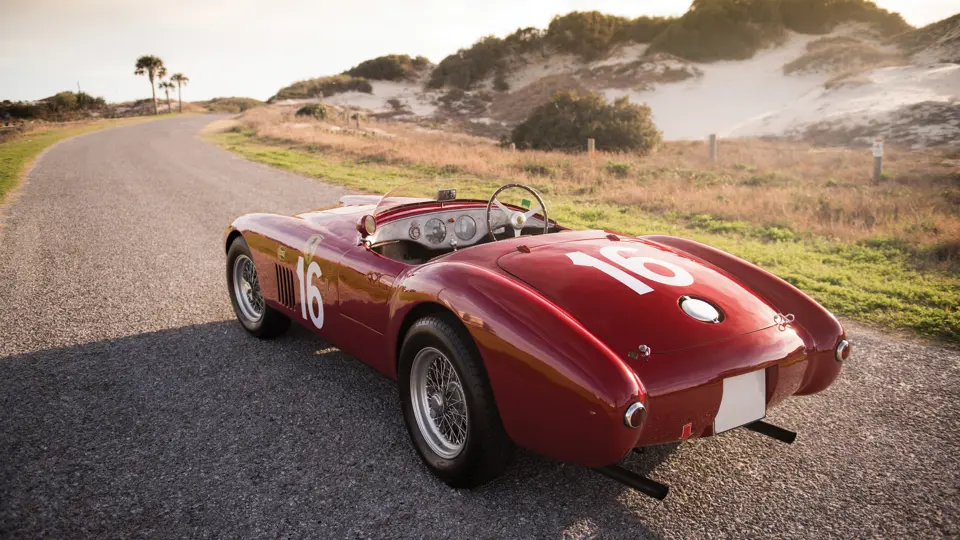
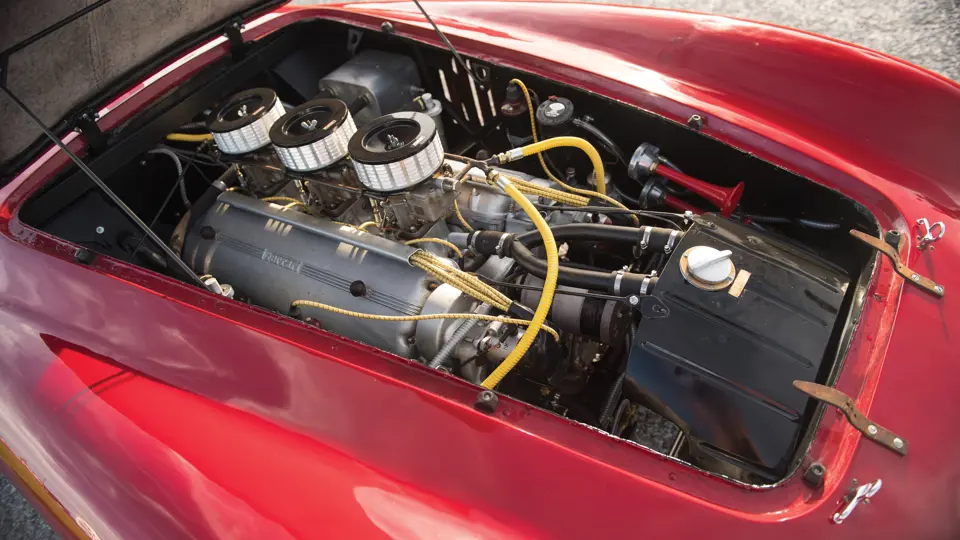






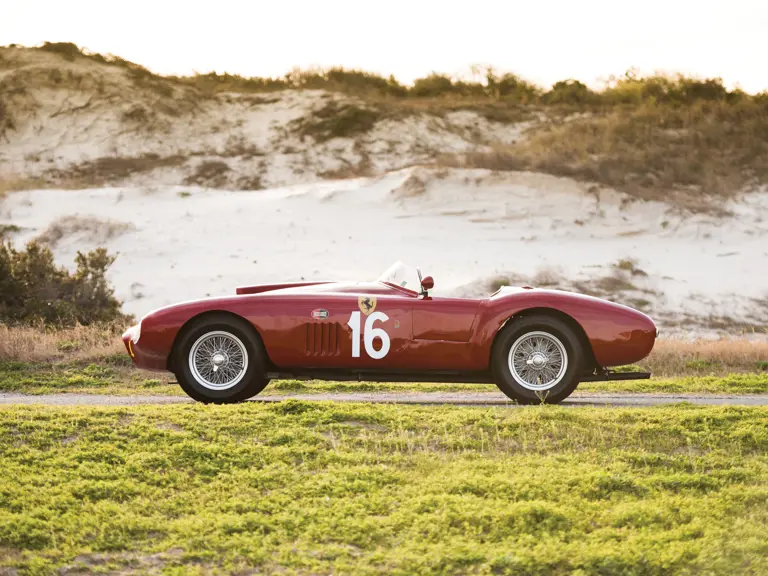

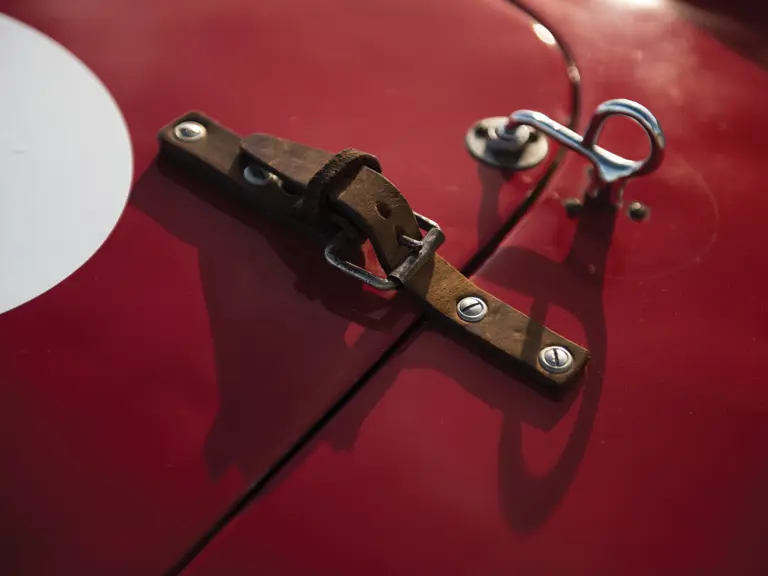
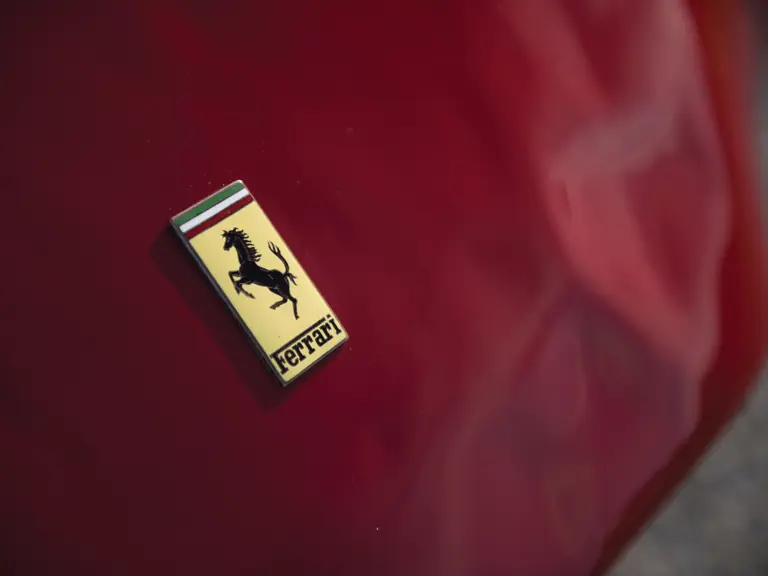

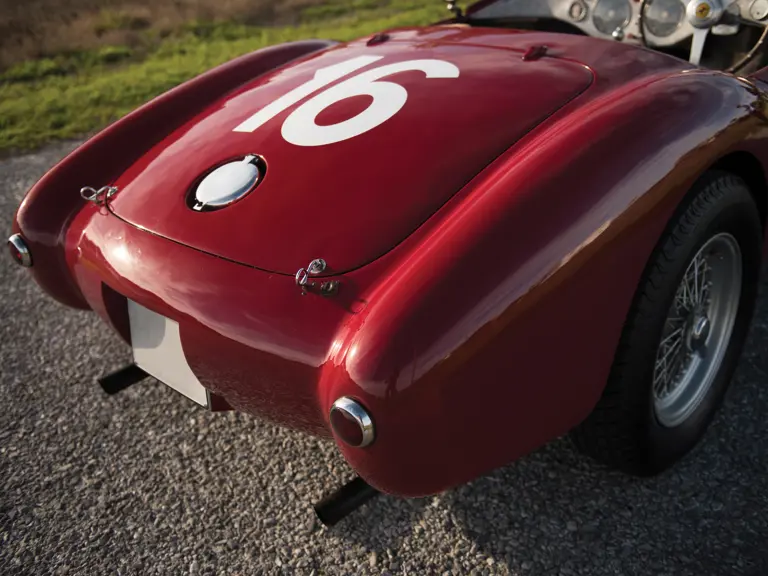
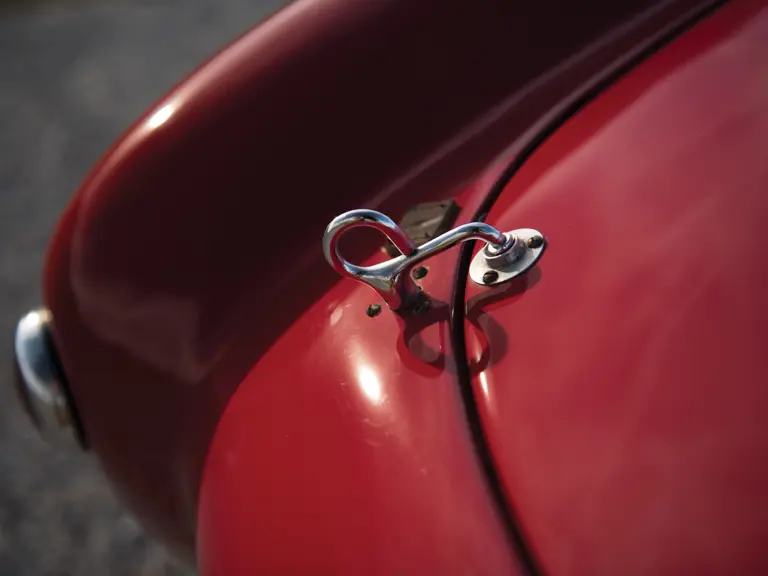
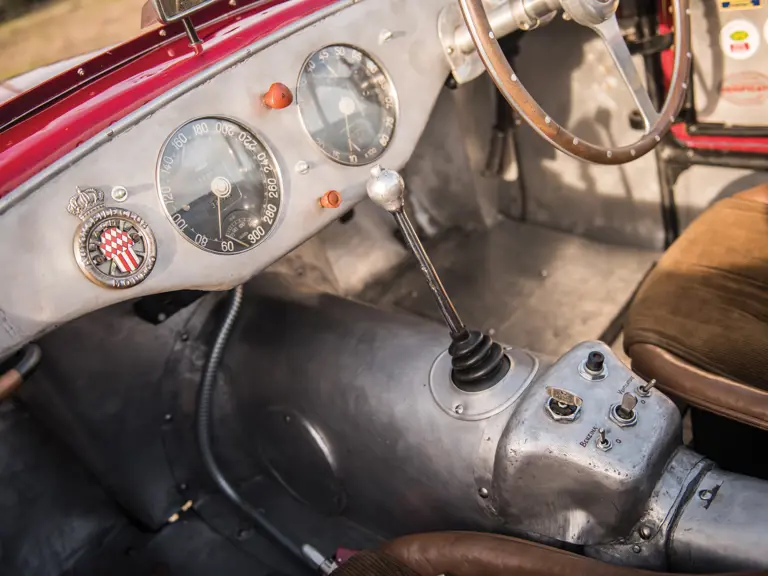
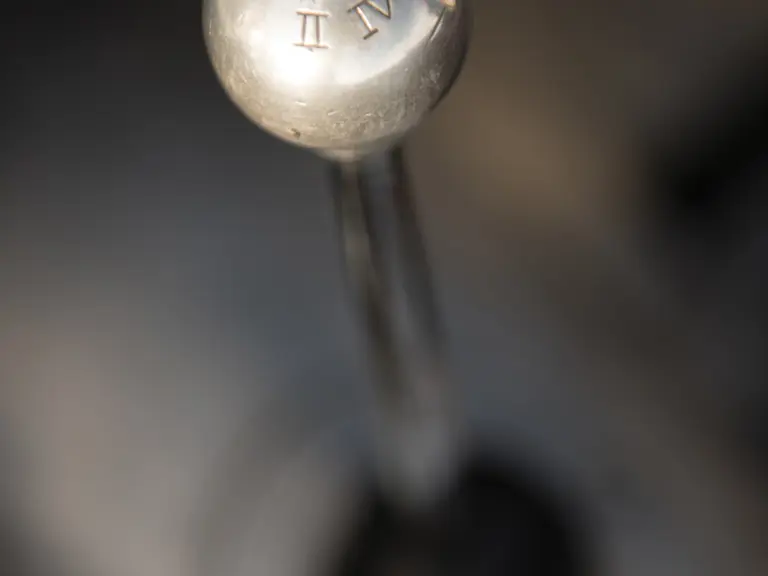
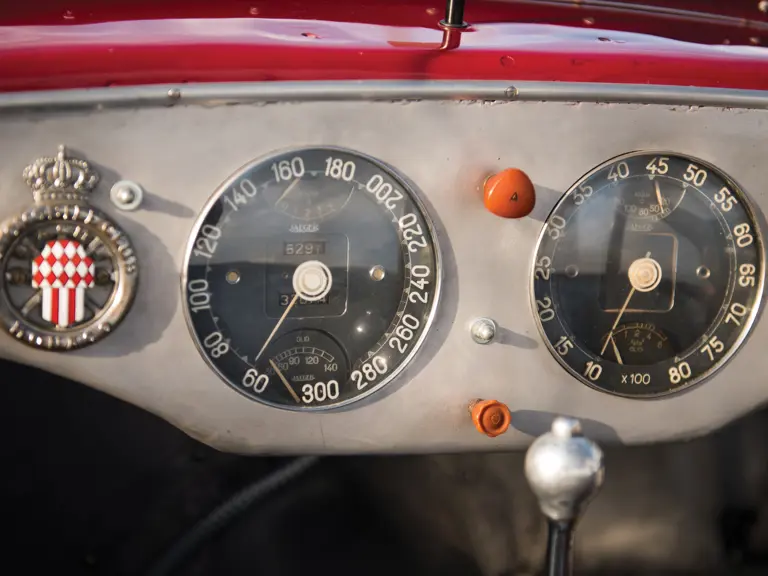
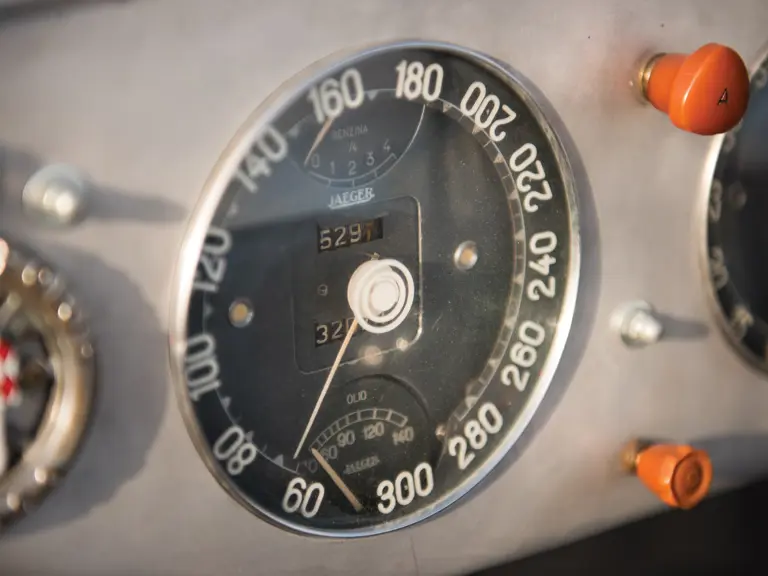
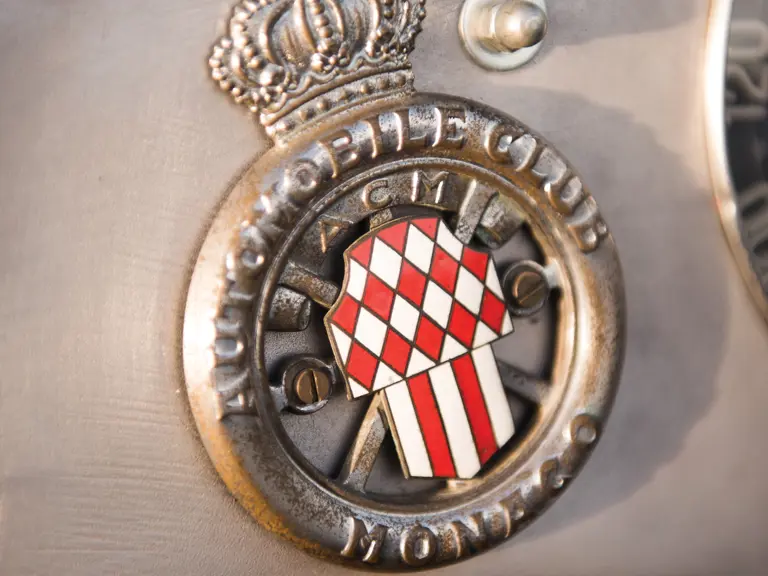

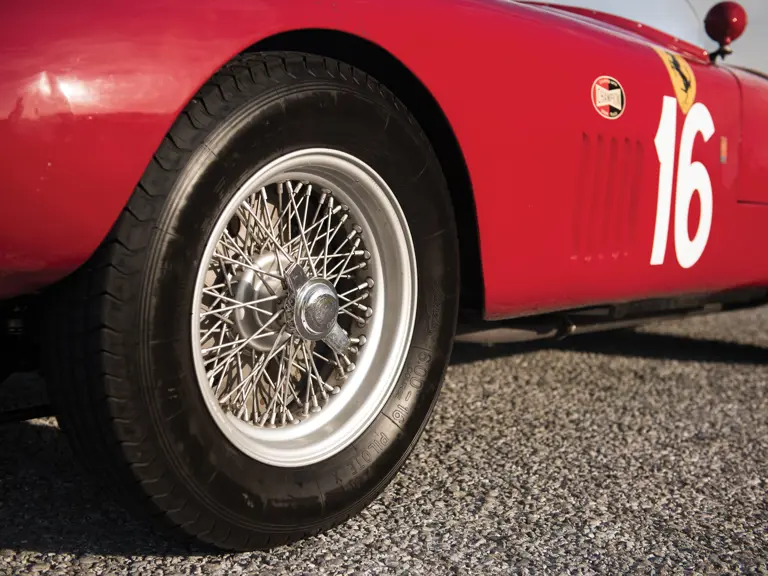

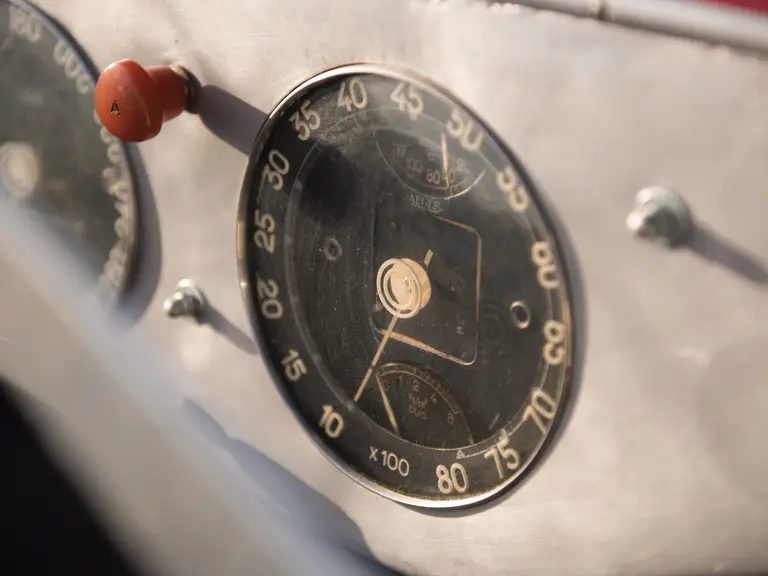
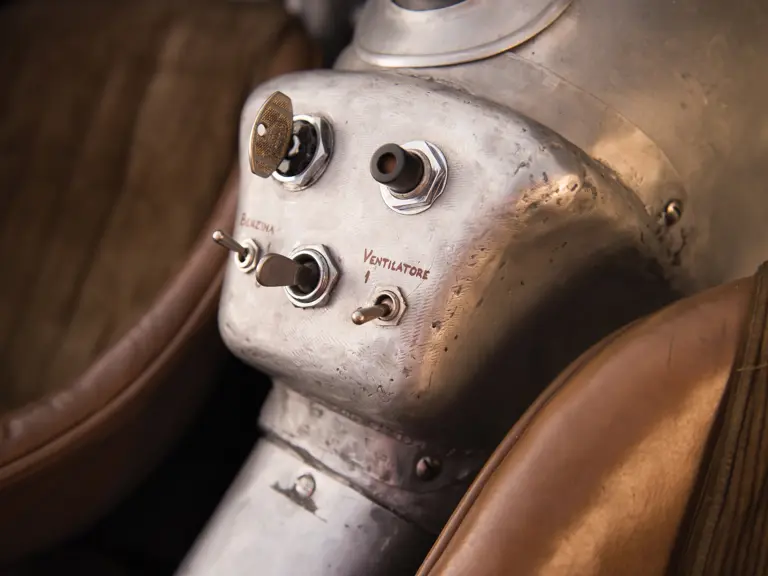
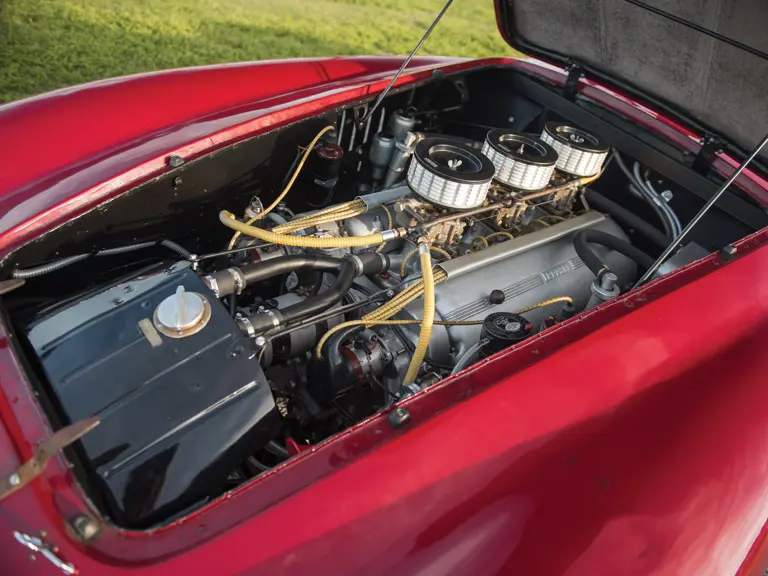

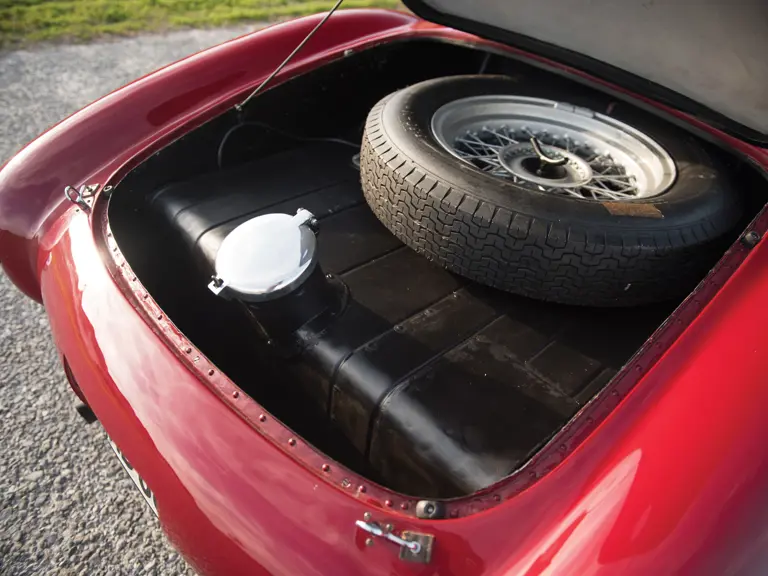

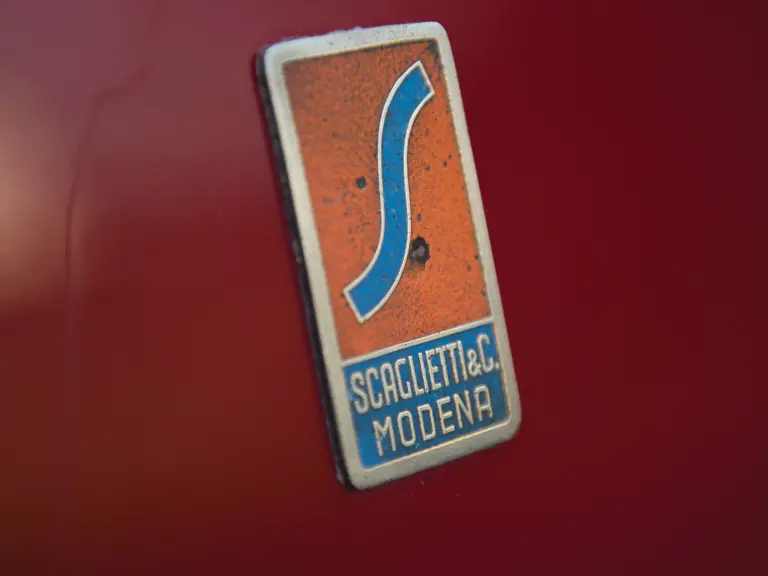
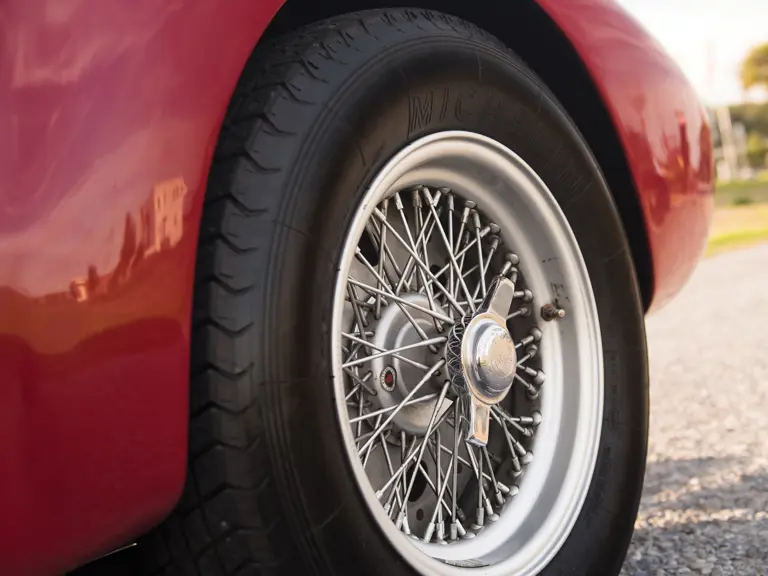

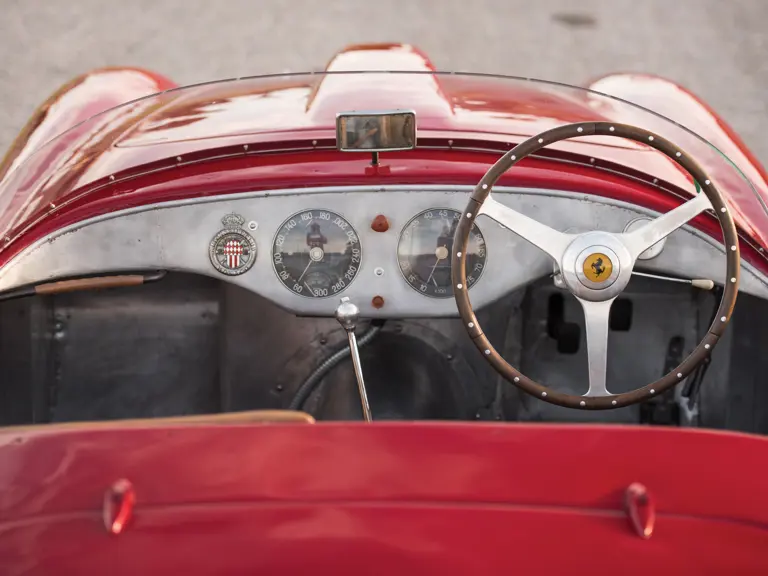



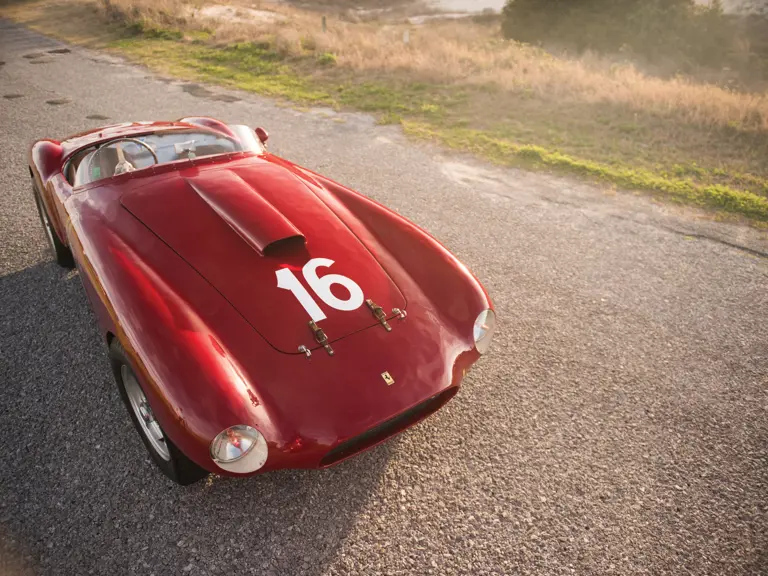




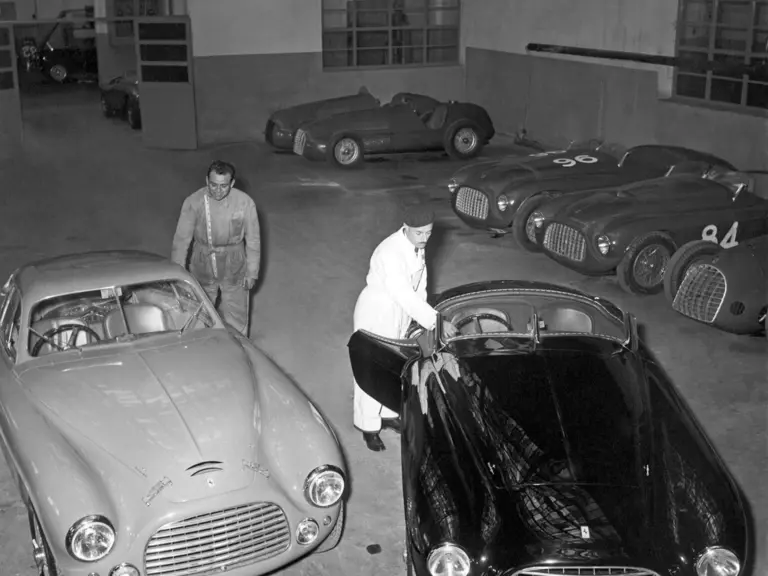

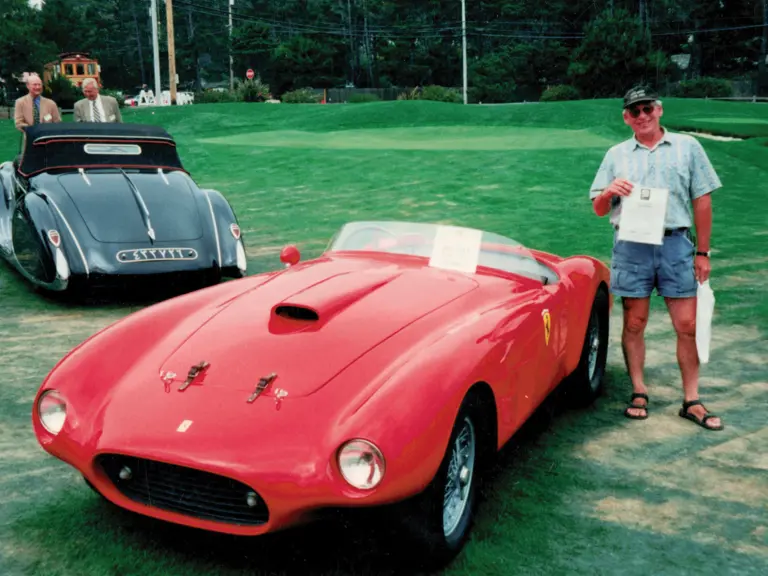
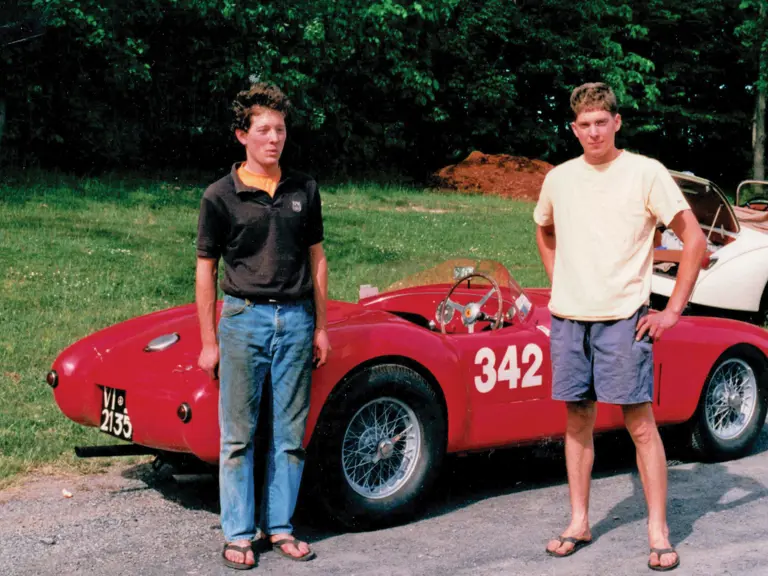

 | Monterey, California
| Monterey, California
